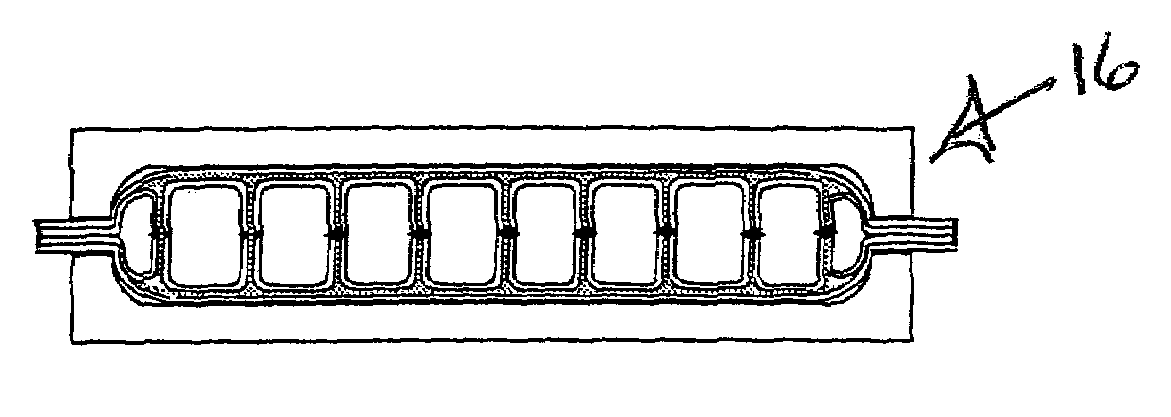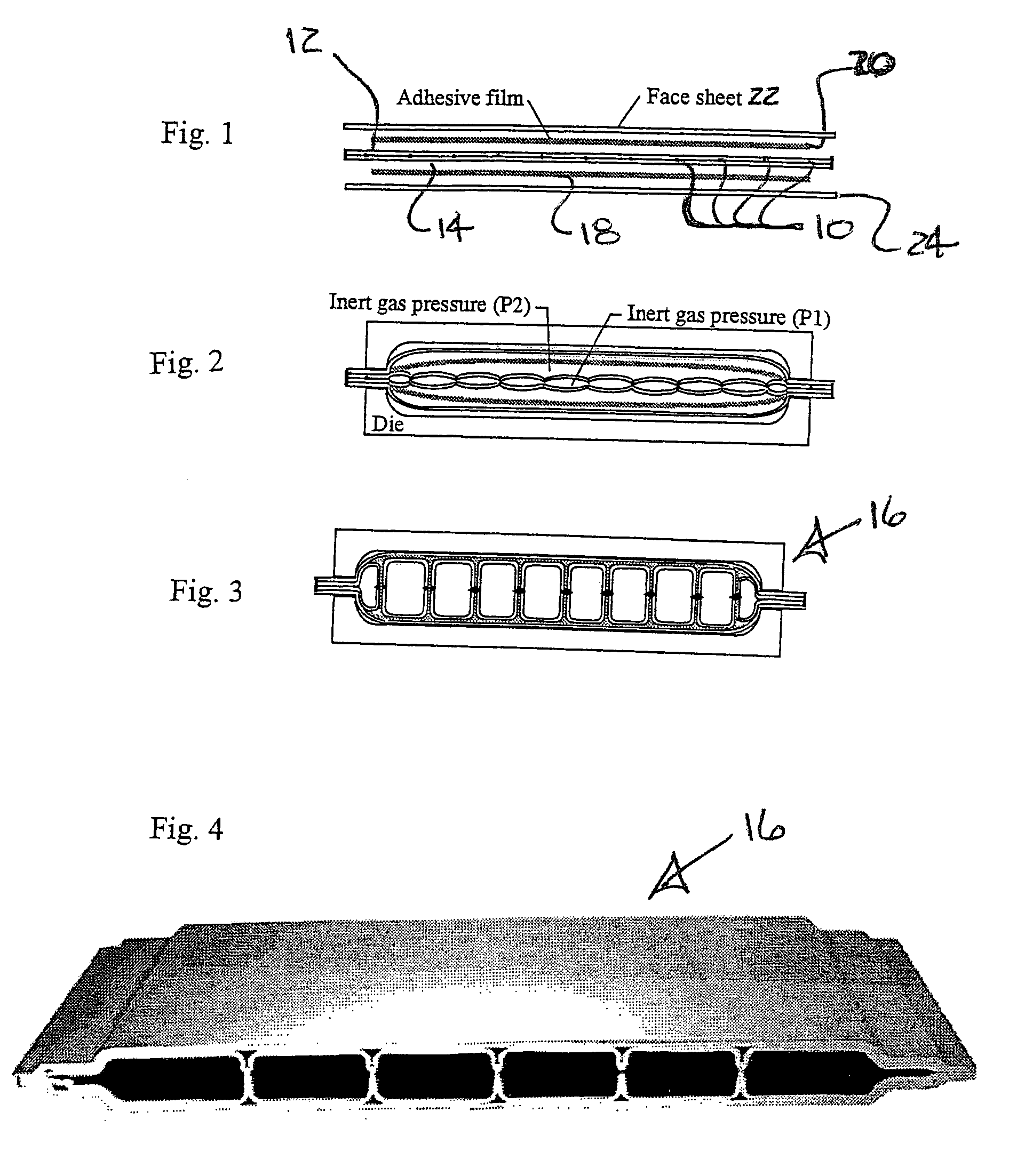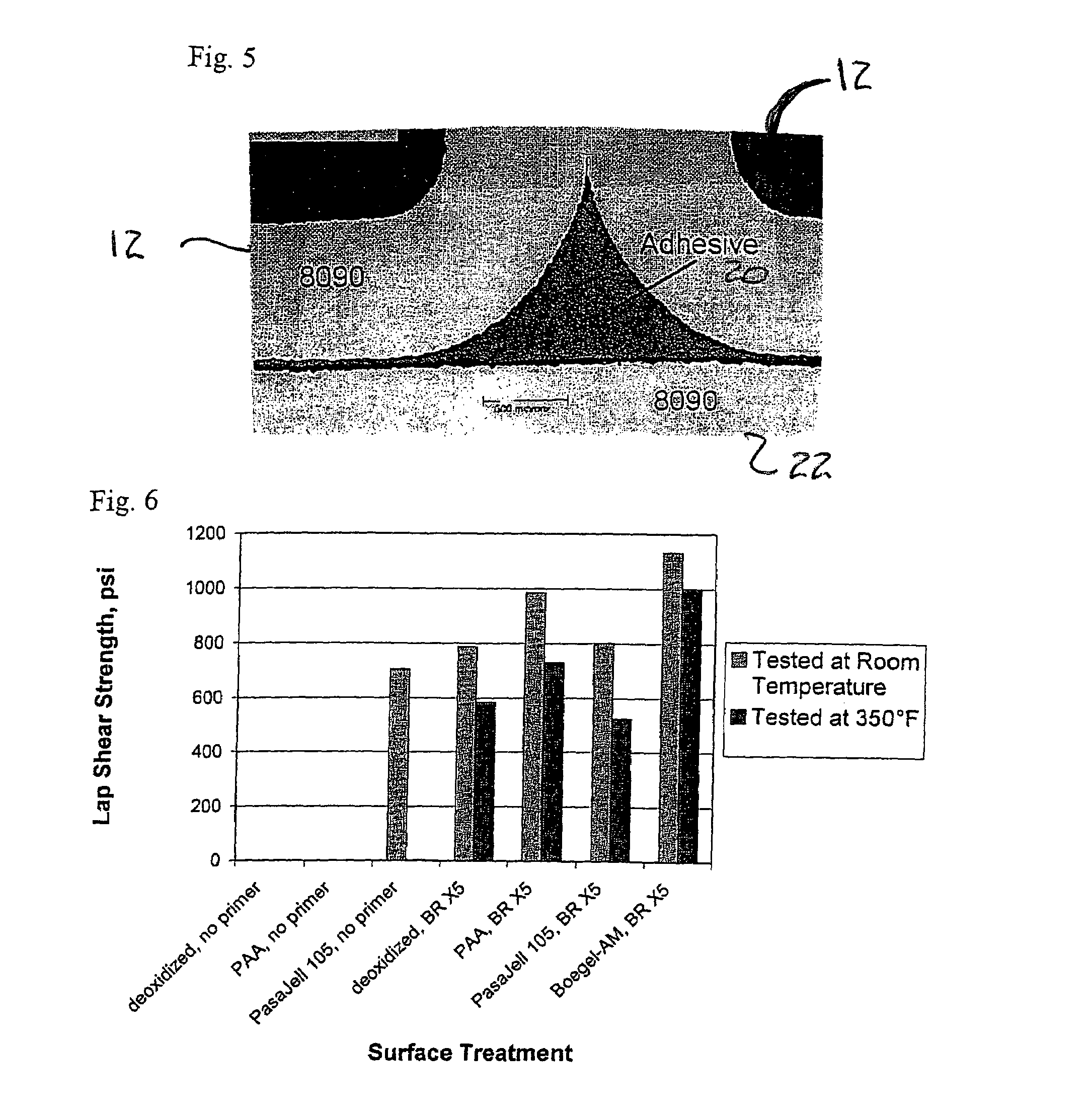Multisheet sandwich panel using superplastic forming and adhesive bonding
a superplastic and bonding technology, applied in the direction of magnetic materials, synthetic resin layered products, magnetic bodies, etc., can solve the problems of reducing the total part count over conventional, consuming considerable time and energy, and reducing the total part count, etc., to prevent diffusion bonding, reduce the cost of production, and reduce the total part count. , the effect of stable surface oxid
- Summary
- Abstract
- Description
- Claims
- Application Information
AI Technical Summary
Benefits of technology
Problems solved by technology
Method used
Image
Examples
Embodiment Construction
[0026]Our preferred SPF / AB process begins with laser or resistance welding (or otherwise connecting) 10 two core sheets 12 and 14 in a pattern for the intended reinforcing rib structure of the formed panel 16. Then adhesive film 18 and 20 is placed on both sides of the welded core sheets, and the entire assembly enclosed within two outer face sheets 22 and 24 to form a multisheet pack. Fittings are welded to permit pressurization and evacuation of the internal core / core and core / skin zones of the pack separately. The basic fabrication approach is analogous to superplastically formed, laser-welded and diffusion bonded (SPF / LW / DB) titanium panels described in U.S. Pat. No. 5,994,666.
[0027]Selection of an Adhesive
[0028]Thermoplastic adhesives are expected to be appropriate to avoid complications with competing cure and forming cycles. That is, a thermosetting polymer increases in strength and stiffness as the polymer cures upon extended exposure to an elevated temperature during its cu...
PUM
| Property | Measurement | Unit |
|---|---|---|
| temperature | aaaaa | aaaaa |
| temperature | aaaaa | aaaaa |
| pressure | aaaaa | aaaaa |
Abstract
Description
Claims
Application Information
 Login to View More
Login to View More - R&D
- Intellectual Property
- Life Sciences
- Materials
- Tech Scout
- Unparalleled Data Quality
- Higher Quality Content
- 60% Fewer Hallucinations
Browse by: Latest US Patents, China's latest patents, Technical Efficacy Thesaurus, Application Domain, Technology Topic, Popular Technical Reports.
© 2025 PatSnap. All rights reserved.Legal|Privacy policy|Modern Slavery Act Transparency Statement|Sitemap|About US| Contact US: help@patsnap.com



